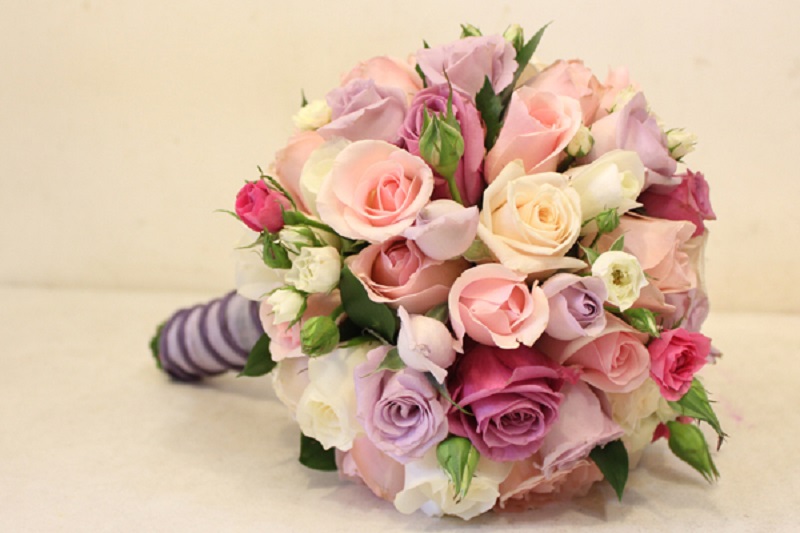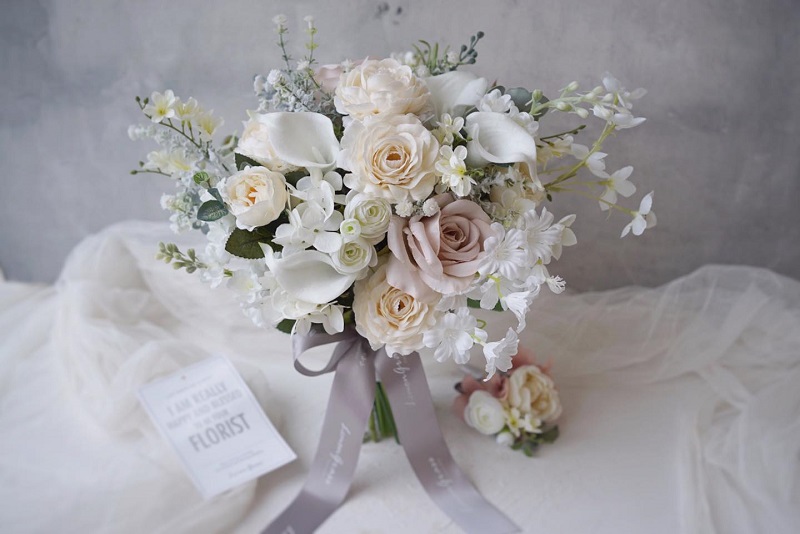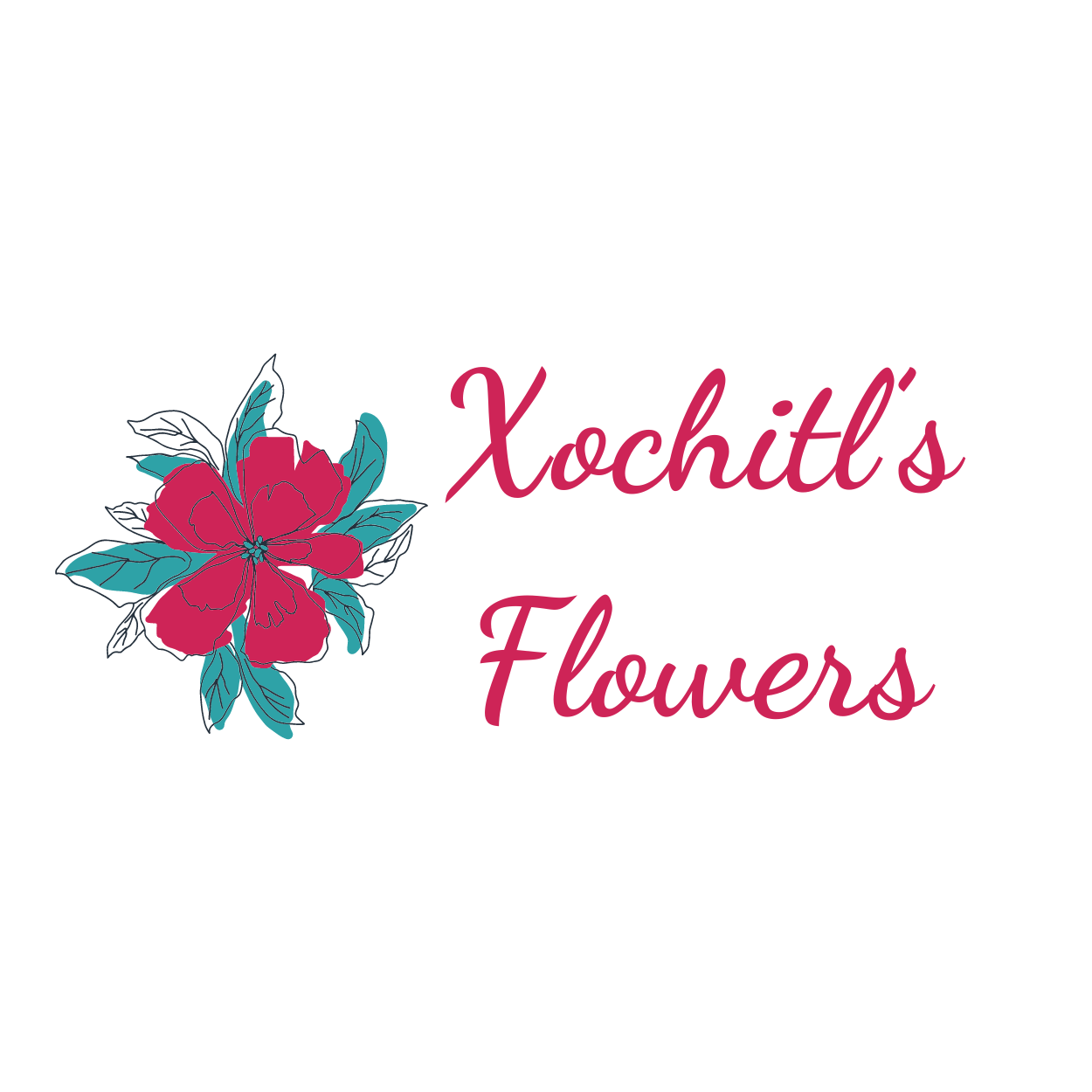Your wedding day is one of the most memorable occasions of your life, and every detail counts toward making it perfect. Among these details, bridal flower arrangements play a crucial role in enhancing the beauty of the bride, complementing the wedding theme, and adding a touch of elegance to the entire celebration. From the bouquet that the bride carries to the complementary blooms for the bridesmaids, each arrangement contributes to the overall ambiance of the event. This comprehensive guide will walk you through the essential types, techniques, and design styles for creating stunning bridal flower arrangements that will make your special day unforgettable.
Types of Bridal Flower Arrangements
Bridal Bouquets
Classic Round Bouquet
The Classic Round Bouquet is a timeless choice characterized by its symmetrical and uniform shape. This arrangement typically features a mix of traditional flowers, such as roses, peonies, and hydrangeas. It’s ideal for brides who want a sophisticated and elegant look that stands the test of time.
Cascade Bouquet
The Cascade Bouquet is designed with flowers cascading downward, creating a dramatic and flowing effect. This style is often chosen for its grandeur and is perfect for formal weddings. Popular flowers include calla lilies, orchids, and various types of greenery, which add to the cascading effect.

Hand-Tied Bouquet
A Hand-Tied Bouquet offers a more natural and relaxed appearance. With stems gathered together and tied with ribbon or twine, this bouquet is great for a garden or rustic-themed wedding. It typically includes wildflowers, garden roses, and herbs, giving it an organic and effortless charm.
Posy Bouquet
The Posy Bouquet is a compact, rounded bouquet that is often used for casual or smaller weddings. Its petite size and simple design make it easy to carry and handle. Popular flowers include mini roses, lisianthus, and baby’s breath, creating a sweet and charming look.
Bridesmaid Bouquets
Complementary Bouquets
Bridesmaid bouquets are usually designed to complement the bridal bouquet, creating a cohesive look for the bridal party. These arrangements can mirror the bridal bouquet’s flowers and colors or feature a simplified version of the design.
Simpler Designs
Bridesmaid bouquets often have simpler designs compared to the bridal bouquet. They are typically less elaborate but still maintain harmony with the overall wedding theme. Single types of flowers or minimalist arrangements are common choices.
Flower Crowns
Full Flower Crown
A Full Flower Crown consists entirely of flowers and is often chosen for its whimsical and bohemian feel. This style is ideal for outdoor or rustic weddings and includes small blooms like daisies, roses, and a mix of greenery.
Half Flower Crown
The Half Flower Crown features flowers on one half of the crown, leaving the other half bare. This design is less dramatic but still provides a charming and unique look, complementing both the bridal bouquet and the overall theme of the wedding.
Boutonnieres
For the Groom
The groom’s boutonniere is a small yet elegant arrangement typically worn on the lapel. It usually features a single bloom, such as a rose or orchid, that matches the wedding’s color scheme and style.
For Groomsmen
Groomsmen’s boutonnieres are designed to complement the groom’s boutonniere. They often feature the same or similar flowers but in a simpler form, ensuring that they coordinate well with the groom’s look.
Flower Girl Arrangements
Flower Girl Bouquets
Flower girl bouquets are designed to be small and manageable for young flower girls. These bouquets are typically simpler and lighter, featuring mini roses, daisies, or seasonal blooms that match the wedding’s theme.
Flower Petal Baskets
Flower petal baskets are a charming option for flower girls to carry. These baskets are filled with flower petals for scattering down the aisle and can be decorated to match the wedding’s color scheme and style.

Selecting Tools and Supplies
Essential Tools
Floral Foam or Oasis
Floral foam or oasis is essential for providing support and hydration to the flowers. It helps keep the blooms in place and ensures they remain fresh throughout the event.
Floral Wire and Tape
Floral wire and tape are used to secure flowers and create structural stability in arrangements. Floral wire is helpful for shaping and positioning flowers, while tape provides additional support.
Pruning Shears or Floral Scissors
Pruning shears or floral scissors are crucial for trimming stems and adjusting their lengths to fit the arrangement. Proper tools ensure clean cuts and enhance the overall look of the arrangement.
Hot Glue Gun and Glue Sticks
A hot glue gun and glue sticks are used for attaching decorations and securing small elements to the arrangement. They are particularly useful for adding embellishments like ribbons or beads.
Flower Food
Flower food is added to the water to nourish the flowers and extend their lifespan. It helps keep the blooms fresh and vibrant for the duration of the event.
Containers and Bases
Bouquet Holders
Bouquet holders provide handles or grips for arranging and holding bouquets. They are essential for creating a comfortable and easy-to-carry arrangement.
Floral Tape and Wire
Floral tape and wire are used to create structure and stability in arrangements. They help secure flowers and other elements, ensuring the arrangement stays intact.
Techniques for Creating Bridal Flower Arrangements
Basic Techniques
Preparing Flowers
Preparing flowers involves cutting stems to the desired length, removing excess foliage, and conditioning the blooms. Cutting stems at an angle and placing them in water immediately ensures they stay hydrated and fresh.
Creating a Base
Creating a base involves using floral foam or oasis to provide support for the flowers. Soaking the foam in water and cutting it to fit the container helps maintain hydration and stability.
Arranging Flowers
Arranging flowers starts with placing focal flowers, followed by adding secondary blooms and fillers. Adjusting for balance and proportion ensures a visually pleasing and harmonious arrangement.
Advanced Techniques
Creating Depth and Dimension
Layering flowers at different heights and angles adds depth and dimension to the arrangement. Mixing textures and colors creates visual interest and enhances the overall design.
Incorporating Unique Elements
Adding unique elements such as ribbons, beads, or other decorative items personalizes the arrangement. Securing these elements with glue or wire ensures they stay in place and contribute to the overall design.
Design Styles and Inspirations
Popular Design Styles
Classic Elegance
Classic Elegance features timeless designs with traditional flowers and formal arrangements. This style often includes classic color schemes and blooms, creating a sophisticated and refined look.
Bohemian
The Bohemian style is characterized by relaxed, natural arrangements with wildflowers and greenery. It’s ideal for garden or rustic-themed weddings, offering a free-spirited and whimsical appearance.
Vintage
Vintage designs evoke a romantic and nostalgic feel with antique touches. Soft colors, lace, and vintage-inspired flowers create a look that is both charming and elegant.
Modern
Modern arrangements feature sleek, contemporary designs with minimalist arrangements. Bold colors and unique flower choices create a sophisticated and up-to-date look.
Seasonal Inspirations
Spring
Spring arrangements are fresh and vibrant, featuring blooms like tulips, peonies, and daisies. The light and airy feel of spring flowers brings a cheerful and lively touch to the wedding.
Summer
Summer arrangements include bright and cheerful flowers such as sunflowers, roses, and lilies. These blooms add a warm and sunny element to the wedding decor.
Fall
Fall arrangements embrace warm and rich colors with blooms like chrysanthemums, dahlias, and seasonal foliage. The autumnal hues create a cozy and inviting atmosphere.
Winter
Winter arrangements feature elegant and cool flowers like amaryllis, poinsettias, and evergreen branches. The wintery elements evoke a serene and sophisticated mood.
Customizing Bridal Flower Arrangements
Personal Touches
Incorporating Personal Preferences
Incorporating personal preferences into the arrangements allows for a unique and meaningful touch. Using favorite flowers, colors, or themes ensures that the bouquets reflect the bride’s style and personality.
Adding Sentimental Items
Including sentimental items, such as family heirlooms or meaningful decorations, adds a personal and emotional element to the arrangements. These touches create a connection to the bride’s family and history.
Coordinating with Wedding Theme
Aligning with Color Scheme
Matching flower colors to the overall wedding palette ensures a cohesive look. Using color swatches and samples helps achieve harmony between the flowers and other wedding elements.
Complementing Venue Decor
Ensuring that flower arrangements complement the venue’s style and decor creates a seamless and integrated look. Considering the venue layout and existing decor helps in designing arrangements that enhance the overall setting.
Caring for Bridal Flower Arrangements
Pre-Wedding Care
Hydration
Keeping flowers hydrated before the event is crucial for maintaining their freshness. Storing flowers in water or floral foam helps them stay vibrant and lively.
Storage
Proper storage of arrangements is essential to preserve their condition. Keeping flowers in a cool, dark place helps prevent wilting and ensures they remain in excellent shape.
Day-of Care
Handling and Transport
Safely transporting arrangements to the venue is important to avoid damage. Using protective wrapping and containers ensures that flowers arrive in perfect condition.
Last-Minute Touch-Ups
Making final adjustments and ensuring arrangements are in top condition before the ceremony is essential. Checking for wilted flowers and re-cutting stems helps maintain the arrangement’s appearance.
Troubleshooting Common Issues
Fixing Design Flaws
Adjusting Flower Placement
Repositioning flowers to improve symmetry and balance can fix design flaws. Making adjustments ensures that the arrangement looks pleasing from all angles.
Repairing Damage
Repairing any damage to flowers or arrangements helps maintain their quality. Replacing damaged blooms or securing loose elements ensures a flawless final look.
Addressing Wear and Tear
Maintaining Freshness
Ensuring flowers stay fresh throughout the event involves using floral preservatives and proper handling. Regularly checking the arrangements helps address any issues promptly.
Creative Ideas and Personalization
Unique Bridal Bouquets
Custom Designs
Creating one-of-a-kind bouquets with unique elements allows for a personalized touch. Incorporating unconventional flowers or personalized items adds individuality to the arrangement.
Themed Arrangements
Designing bouquets that fit specific themes or motifs enhances the wedding’s overall concept. Customizing arrangements to reflect themes such as nautical or garden adds a special touch.
Exploring New Trends
Innovative Styles
Embracing new floral design trends can bring a modern and fresh look to the arrangements. Incorporating exotic flowers or alternative materials can create a distinctive and stylish bouquet.
Personal Expression
Reflecting the bride’s personality and style through floral arrangements ensures a meaningful and memorable touch. Customizing designs to align with personal tastes and wedding themes adds a unique and personal flair.
Conclusion
Bridal flower arrangements are more than just decorative elements; they are integral to enhancing the bride’s beauty, complementing the wedding theme, and creating a cohesive look for the celebration. By understanding the various types of arrangements, mastering essential techniques, and exploring different design styles, you can create stunning floral displays that make the wedding day truly unforgettable. Embrace the process, experiment with different ideas, and let your creativity shine as you craft beautiful and meaningful arrangements that reflect the essence of your special day.
